Related Research Articles
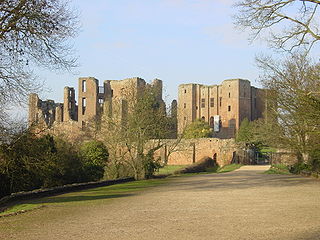
Kenilworth Castle is a castle in the town of Kenilworth in Warwickshire, England managed by English Heritage; much of it is still in ruins. The castle was founded during the Norman conquest of England; with development through to the Tudor period. It has been described by the architectural historian Anthony Emery as "the finest surviving example of a semi-royal palace of the later middle ages, significant for its scale, form and quality of workmanship".

Robert Dudley, 1st Earl of Leicester, was an English statesman and the favourite of Elizabeth I from her accession until his death. He was a suitor for the queen's hand for many years.
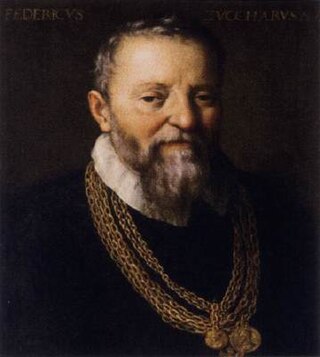
Federico Zuccaro, also known as Federico Zuccari, was an Italian Mannerist painter and architect, active both in Italy and abroad.

Shute Barrington was an English churchman, Bishop of Llandaff in Wales, as well as Bishop of Salisbury and Bishop of Durham in England.
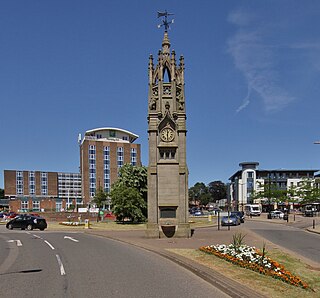
Kenilworth is a market town and civil parish in the Warwick District in Warwickshire, England, 6 miles (10 km) south-west of Coventry, 5 miles (8 km) north of Warwick and 90 miles (140 km) north-west of London. It lies on Finham Brook, a tributary of the River Sowe, which joins the River Avon 2 miles (3 km) north-east of the town. At the 2021 Census, the population was 22,538. The town is home to the ruins of Kenilworth Castle and Kenilworth Abbey.
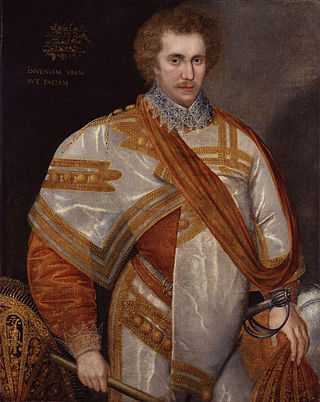
Robert Sidney, 1st Earl of Leicester, second son of Sir Henry Sidney, was a statesman of Elizabethan and Jacobean England. He was also a patron of the arts and a poet. His mother, Mary Sidney née Dudley, was a lady-in-waiting to Queen Elizabeth I and a sister of Robert Dudley, 1st Earl of Leicester, an advisor and favourite of the Queen.
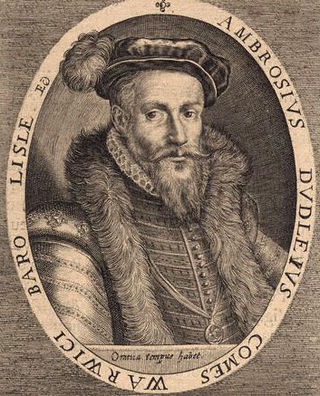
Ambrose Dudley, 3rd Earl of Warwick, KG was an English nobleman and general, and an elder brother of Queen Elizabeth I's favourite, Robert Dudley, Earl of Leicester. Their father was John Dudley, Duke of Northumberland, who led the English government from 1550–1553 under King Edward VI and unsuccessfully tried to establish Lady Jane Grey on the English throne after the King's death in July 1553. For his participation in this venture Ambrose Dudley was imprisoned in the Tower of London and condemned to death. Reprieved, his rehabilitation came after he fought for King Philip in the Battle of St. Quentin.
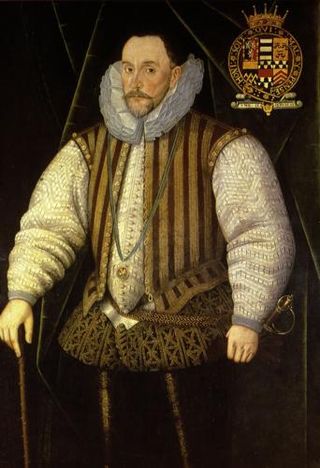
Henry Herbert, 2nd Earl of Pembroke, KG, KB was a Welsh nobleman, peer and politician of the Elizabethan era. He was the nephew of Catherine Parr, and brother-in-law of Lady Jane Grey, through his first wife.

Amy, Lady Dudley was the first wife of Robert Dudley, Earl of Leicester, favourite of Elizabeth I of England. She is primarily known for her death by falling down a flight of stairs, the circumstances of which have often been regarded as suspicious. Amy Robsart was the only child of a substantial Norfolk gentleman. In the vernacular of the day, her name was spelled as Amye Duddley.
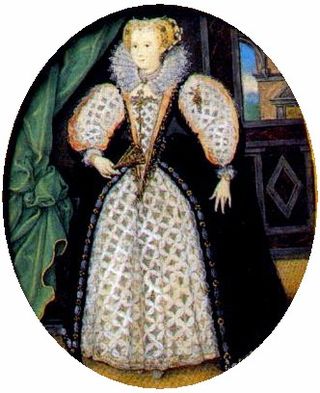
Penelope Rich, Lady Rich, later styled Penelope Blount was an English court office holder. She served as lady-in-waiting to the English queen Anne of Denmark. She was the sister of Robert Devereux, 2nd Earl of Essex, and is traditionally thought to be the inspiration for "Stella" of Sir Philip Sidney's Astrophel and Stella sonnet sequence. She was married to Robert Rich, 3rd Baron Rich and had a public liaison with Charles Blount, Baron Mountjoy, whom she married in an unlicensed ceremony following her divorce from Rich. She died in 1607.
Lord William Howard was an English nobleman and antiquary, sometimes known as "Belted or Bauld (bold) Will".
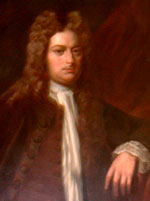
William Dummer was a politician in the Province of Massachusetts Bay. He served as its lieutenant governor for fourteen years (1716–1730), including an extended period from 1723 to 1728 when he acted as governor. He is remembered for his role in leading the colony during what is sometimes called Dummer's War, which was fought between the British colonies of northeastern North America and a loose coalition of native tribes in what is now New Hampshire, Maine, New Brunswick, and Nova Scotia.

Sir Edward Montagu of Boughton, Hanging Houghton and Hemington in Northamptonshire was an English lawyer and judge in the time of Henry VIII and Edward VI. He was Chief Justice of the King's Bench from 1539 to 1545 and Chief Justice of the Common Pleas from 1545 to 1553.
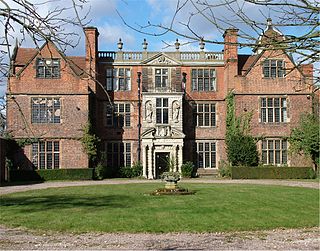
The Jacobean style is the second phase of Renaissance architecture in England, following the Elizabethan style. It is named after King James VI and I, with whose reign it is associated. At the start of James' reign there was little stylistic break in architecture, as Elizabethan trends continued their development. However, his death in 1625 came as a decisive change towards more classical architecture, with Italian influence, was in progress, led by Inigo Jones; the style this began is sometimes called Stuart architecture, or English Baroque.

John Harington, 1st Baron Harington of Exton in Rutland, was an English courtier and politician.
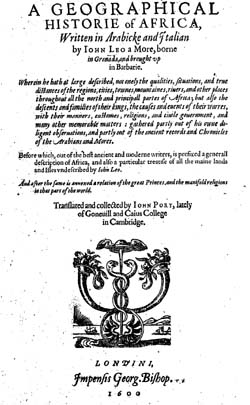
John Pory (1572–1636) was an English politician, administrator, traveller and author of the Jacobean and Caroline eras; the skilled linguist may have been the first news correspondent in English-language journalism. As the first Speaker of the Virginia General Assembly, Pory established parliamentary procedures for that legislative body still in use today.
Events from the 1560s in England.
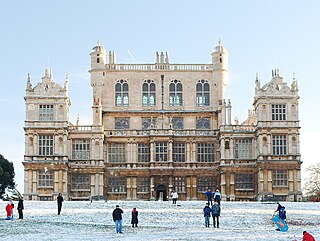
Prodigy houses are large and showy English country houses built by courtiers and other wealthy families, either "noble palaces of an awesome scale" or "proud, ambitious heaps" according to taste. The prodigy houses stretch over the periods of Tudor, Elizabethan, and Jacobean architecture, though the term may be restricted to a core period of roughly 1570 to 1620. Many of the grandest were built with a view to housing Elizabeth I and her large retinue as they made their annual royal progress around her realm. Many are therefore close to major roads, often in the English Midlands.

Sir Andrew Dudley, KG was an English soldier, courtier, and diplomat. A younger brother of John Dudley, 1st Duke of Northumberland, he served in Henry VIII's navy and obtained court offices under Edward VI. In 1547–1548 he acted as admiral of the fleet and participated in the War of the Rough Wooing in Scotland, where he commanded the English garrison of Broughty Castle. He was appointed captain of the fortress of Guînes in the Pale of Calais in late 1551. There he got involved in a dispute with the Lord Deputy of Calais, which ended only when both men were replaced in October 1552.
References
- Morris, R. K. (2010): Kenilworth Castle English Heritage ISBN 978-1-84802-075-7